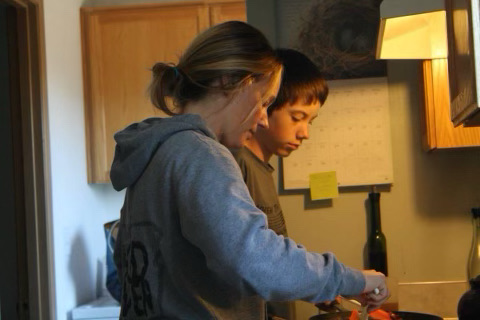
A young Mason enjoys a moment with his mother who taught him how to cook.
I grew up in a family devoted to the pleasure of cooking, serving, and enjoying food together! Every time my family gathers, each of us comes prepared to cook the best appetizers, main courses, and desserts we’ve tried since our last meeting. So, when I moved into my current house, I was ecstatic to find my kitchen was equipped with gas appliances. Like many people, I had been led to believe that cooking with a gas range was the epitome of luxury and the ultimate culinary tool. It never occurred to me that it's rather odd to believe that combusting fossil fuels in my kitchen enhanced my cooking experience. In retrospect, as an avid runner, I always dreaded breathing car or leaf blower exhaust. Why would I intentionally invite similar toxic emissions into the indoor air I breathe while spending time cooking in my kitchen?
Curiosity Leads to a Discovery
My whole view of gas stoves changed when I took home a Flow 2 air quality meter from the Beyond Toxics office. The Flow 2 (pictured right), is capable of measuring Nitrogen Dioxide (NO2) and Total Volatile Organic Compounds (TVOCs). Sure, I had heard on the news that NO2 from gas stoves causes 12.7% of childhood asthma, but as an adult with healthy lungs, I didn't believe I had anything to worry about.
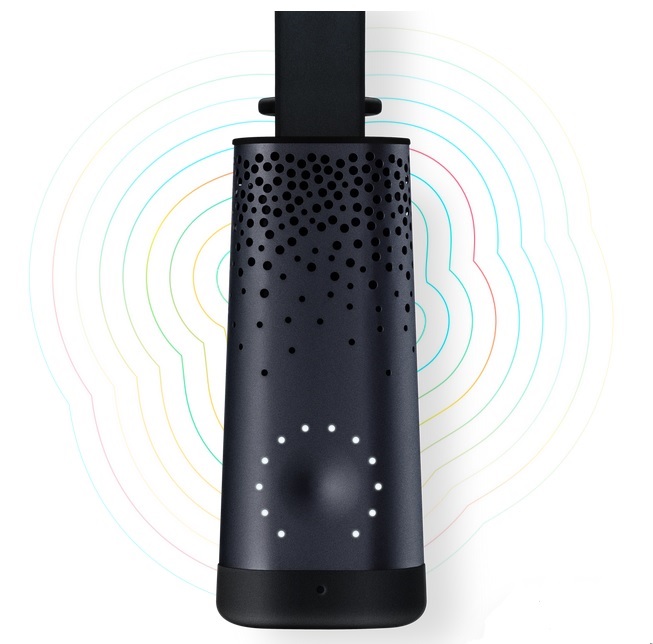
Flow 2 air quality meter made by Plume Labs
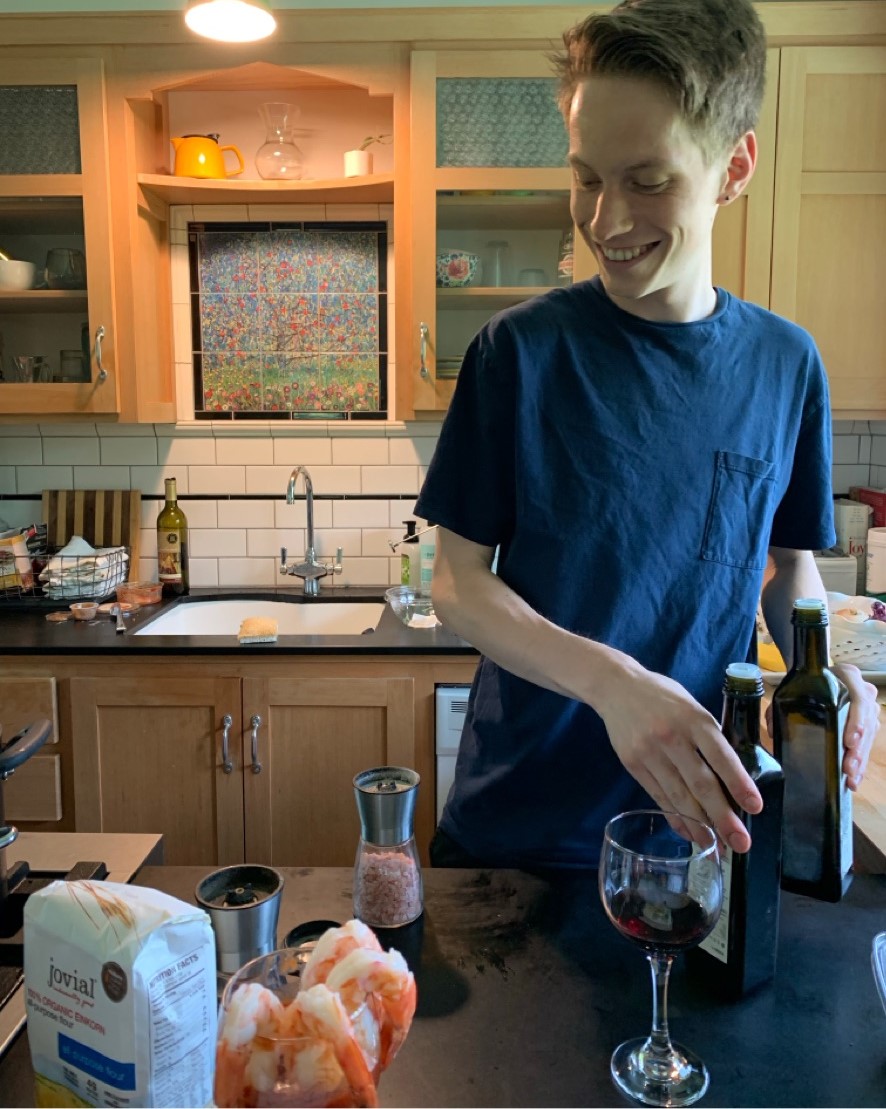
However, I was intrigued to collect and analyze my own data about my home’s air quality. Data gives me something concrete to look at and helps me understand what's happening around me. I eagerly unpackaged the Flow 2 meter, and followed the directions to set up the device. After two days of calibrating the device, I went to do my weekly meal prep: potato and roasted veggie breakfast burritos, a coconut milk curry with rice for lunch, and salmon with roasted brussel sprouts for dinner. Using 2-3 burners and a gas oven, I prepared my breakfasts, lunches, and dinners for the work week. I also watched in horror as the nitrogen dioxide (NO2) levels in my kitchen skyrocketed to levels considered dangerous for humans to breathe, both healthy people and those with compromised lungs and hearts. I promptly opened all the windows and let in as much fresh air into the house as possible. I wondered, how is this amount of air pollution legally allowed inside people’s homes? Why did I think that gas stoves were okay for public health? I showed my roommates the data and their eyes widened in shock.
Soon, I developed a regular habit of checking the Flow 2 meter everytime my roommates or I cooked. Each time I saw NO2 levels reaching concentrations ranging from unhealthy to hazardous depending on the time spent cooking and the amount of burners used. Our gas powered oven seemed especially egregious as it consistently pushed the NO2 in our house higher than when we used the stove. NO2 is not just harmful to kids and people with asthma. Long-term exposures to high levels such as what I was measuring in my own kitchen, can cause chronic lung diseases according to the Center for Disease Control.
In January I worked with my colleagues, Meet Panchal and Alyssa Rueda, to carry out a gas stove emissions pilot project in 13 houses with gas appliances in Eugene and Springfield. We wanted to see if we could consistently visualize the air pollutants commonly emitted by gas appliances. In each house, we deployed the Flow 2 meter as well as a Forward Looking InfraRed (FLIR) video camera. The FLIR camera is a professional grade camera used by the gas industry that is capable of visualizing unburned hydrocarbons such as methane, the primary ingredient in natural gas, and some specific VOCs produced by gas stoves like benzene and toluene. You can view our full report here. We detail lots of research done on gas stove pollution, our methods, findings, and some recommendations on how to improve your air quality if you have gas appliances.
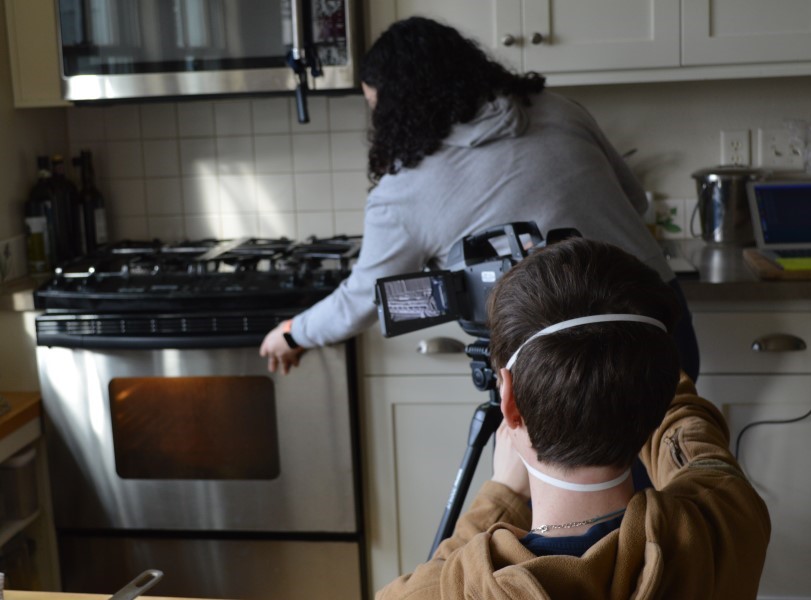
Pictured above: Mason Leavitt (foreground) records invisible toxic plumes from a gas stove using a FLIR camera; Alyssa Rueda opens oven door during filming.
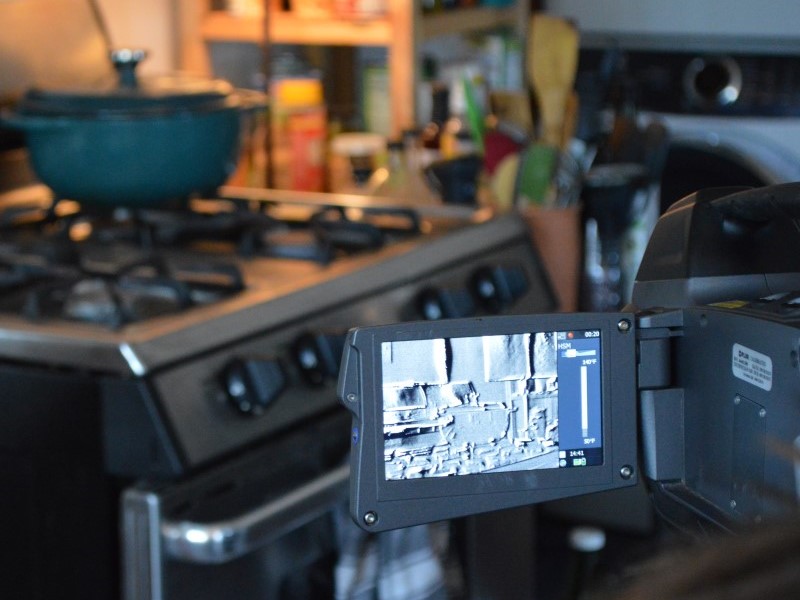
The Protocol
In each house we turned on a single stove top burner on at a simmer for 1-5 minutes. In houses with an oven, we preheated it to 350 degrees and then turned the oven off. This was a pilot project, so the amount and duration of gas fell short of the typical amount of pollution emitted when actually cooking a meal, which can involve multiple stove burners or heating an oven to higher temperatures. Nonetheless, the results were concerning. The camera’s footage stunned participants and staff alike.
Curiosity Leads to a Discovery
The Flow 2 measured a rising concentration of NO2, hydrocarbons and VOCs, even after turning on gas stoves and ovens. In 9 of 13 houses, an increase in NO2 was sufficient enough to result in an acute increase of asthma symptoms for kids (1). In 5 of 13 houses, the NO2 levels were considered chronically harmful for vulnerable populations such as children, elderly, people of color, or those with preexisting respiratory health conditions. In 3 of those houses, the NO2 reached levels the World Health Organization (WHO), a branch of the United Nations, concluded as harmful to every person regardless of their history with respiratory illness. One of those houses reached NO2 concentrations WHO says constitutes emergency conditions, and individuals should vacate the area, or minimize their breathing and physical activity as much as possible if they can’t leave.
The Bigger Picture
In our full report, we detail how gas ranges emit many more concerning pollutants such as benzene, formaldehyde, carbon monoxide, and particulate matter. Carrying out this case study on gas appliances and indoor air pollution has given our community the opportunity to understand the health risks of cooking with gas stoves, and the advantages of switching to electric appliances in our homes and businesses.
I encourage you to check out the report for more details, and also stay tuned to Beyond Toxics’ updates (sign up for our e-alerts) as we continue to collect data on gas stove pollution, and find tips on how to improve the safety of our kitchens and homes!
For now, I will take steps to ventilate my kitchen because, as a renter, I don’t have the choice to switch to electric appliances. In the future, I hope to live in a home that is equipped with electric kitchen appliances that I know are safe and healthy for everyone, including my family of passionate cooks.

Written by Mason Leavitt, GIS and Spatial Data Coordinator
Photos of FLIR camera testing sessions by Emily Matlock
Reference:
1) Belanger, K., et al."Household Levels of Nitrogen Dioxide and Pediatric Asthma Severity."
Epidemiology, vol. 24, no. 2, 2013, pp. 320-330.
https://doi.org/10.1097/EDE.0b013e318280e2ac

